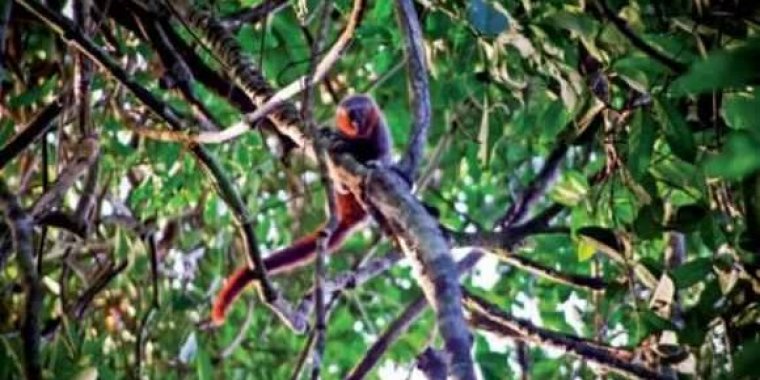| News / Science News |
Report unveils 381 new plant and animal species in Amazon
A report released this week reveals 381 new species of plants and animals found in the Amazon between 2014 and 2015. There are 216 new species of plants, 93 fishes, 32 amphibians, 19 reptiles, one bird, 20 mammals (two of them fossils). On average, a new species was discovered in the region every two days.

Fire-tailed titi-monkey Plecturocebus miltoni. ![]()
The findings can be found in a report whose title translates as “Update and Listing of New Amazon Vertebrates and Plant Species 2014-2015”. It contains descriptions of species provided by researchers from all around Brazil and abroad.
The two previous updates include discoveries from 1999 to 2009 and from 2010 to 2013. In all, more than 2,000 new species have been described in the past 17 years.
According to Ricardo Mello, who spearheads WWF-Brasil's Amazon Program, a mere 20% of the forest's ecosystem is known. Most of the discoveries in the latest issues occurred in conservation units in the Amazon.
Most striking among the new species are the dolphin Inia araguaiaensis, found in the River Araguaia basin, and the new primate species, the fire-tailed titi-monkey Plecturocebus miltoni.
Four new fish species were discovered in the National Copper Reserve and Associates (RENCA), abolished by a presidential decree.
The fish move easily through the river, they're ornamental fish, but they're part of the food chain. There are signs of contamination through mercury, which makes an impact on the fauna and the local population. (Agência Brasil)
YOU MAY ALSO LIKE





